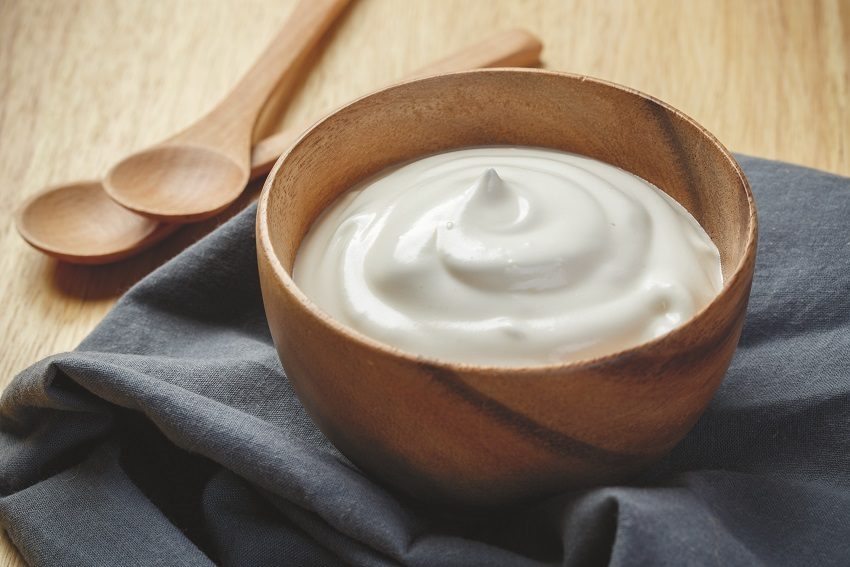Could a yoghurt drink prevent childhood leukaemia?

A yoghurt-like drink could spare children and families the trauma of acute lymphoblastic leukaemia diagnosis and treatment.
There are few more emotive topics than childhood cancer. In turn, there are few more deserving of a knighthood than those that devote their lives to understanding and curing childhood cancer. Quite right then that Professor Mel Greaves, Director of the Centre for Evolution and Cancer at the Institute of Cancer Research in London, was appointed the honour of Knight Bachelor in the 2019 New Year Honours list. Professor Greaves has spent the last 40 years working to “understand what was causing leukaemia in children, and how this new knowledge could make their lives better”.
Professor Greaves’ research has focused primarily on acute lymphoblastic leukaemia (ALL), the most common form of childhood cancer in Australia, with children under 14 years representing almost 60 per cent of all cases. Bone marrow creates blood stem cells, which mature into either myeloid stem cells or lymphoid stem cells. Myeloid stem cells develop into red blood cells, platelets or white blood cells. These cells perform functions like carrying oxygen around the body, helping blood to clot, and fighting infection. Lymphoid stem cells develop into lymphoblasts, and then into either B lymphocytes, T lymphocytes, or natural killer cells. These forms of mature white blood cells perform critical immune functions like fight viruses and infections, and attack cancer cells. In the case of ALL, the bone marrow produces too many lymphoblasts, also known as leukaemic blasts. These leukaemic cells aren’t equipped to fight infection and take up room that would otherwise be given over to healthy white blood cells, red blood cells or platelets. The blast cells travel to various parts of the body including the glands, spleen, liver and central nervous system. The first symptoms of ALL to emerge in children are usually fever and easy bruising or bleeding.
Thanks in large part to the work of Professor Greaves, around 90 per cent of ALL cases will be successfully treated. However, diagnosis and treatment of ALL is painful and traumatic. Lucky then that Professor Greaves and his team have recently published work in Nature Reviews Cancer documenting their discovery of the causes of ALL, bringing us one step closer to a cure. The development of ALL occurs in two stages. The first involves a random genetic mutation when a baby is still in the womb. The mutation occurs in about one in 20 babies. Ninety-nine per cent of these babies won’t develop ALL. The one per cent that do develop ALL are those who are not exposed to certain bacteria in their first year of life. That is, babies with the mutated gene, and whose immune systems aren’t primed during infancy by exposure to common infections, are more likely to develop ALL when exposed to certain bacteria later in childhood. Potential reasons babies may not be exposed to healthy bacteria in time to prime their immune system are babies not spending enough time during infancy with other babies, a decline in breastfeeding, and overuse of antibacterial agents in the home.
This ‘delayed infection’ theory explains why ALL is increasing in prevalence at a rate of one per cent per year, and why the disease is particularly prevalent in more affluent societies. As Professor Greaves says, ALL “is a feature of developed societies but not of developing ones… the disease tracks with affluence”. The next step for Professor Greaves and his team is to investigate whether early exposure to common but harmless bacteria could help prevent leukaemia in those children that are genetically predisposed. Prof. Greaves is currently testing this theory in mice and, if confirmed, then it may open the door to an intervention to help prevent ALL in children. His potential solution? A yoghurt-like drink that could be given to very young children to help populate the gut with healthy bacteria. This could spare children and families the trauma of ALL diagnosis and treatment, and potentially even protect against other illnesses linked to gut health including allergies and Type 1 diabetes.
So, what kind of accolade does potentially curing the most common form of childhood cancer deserve? What’s higher than Knighthood? King of the North? Someone build this man an Iron Throne. You don’t need to be a parent to realise that there is no honour, fictional or otherwise, high enough to recognise the astounding gravity of what Professor Greaves and his team have achieved.
Dr Jessica L Paterson
Senior Research Fellow, CQUniversity, Appleton Institute
Photo:
Shutterstock